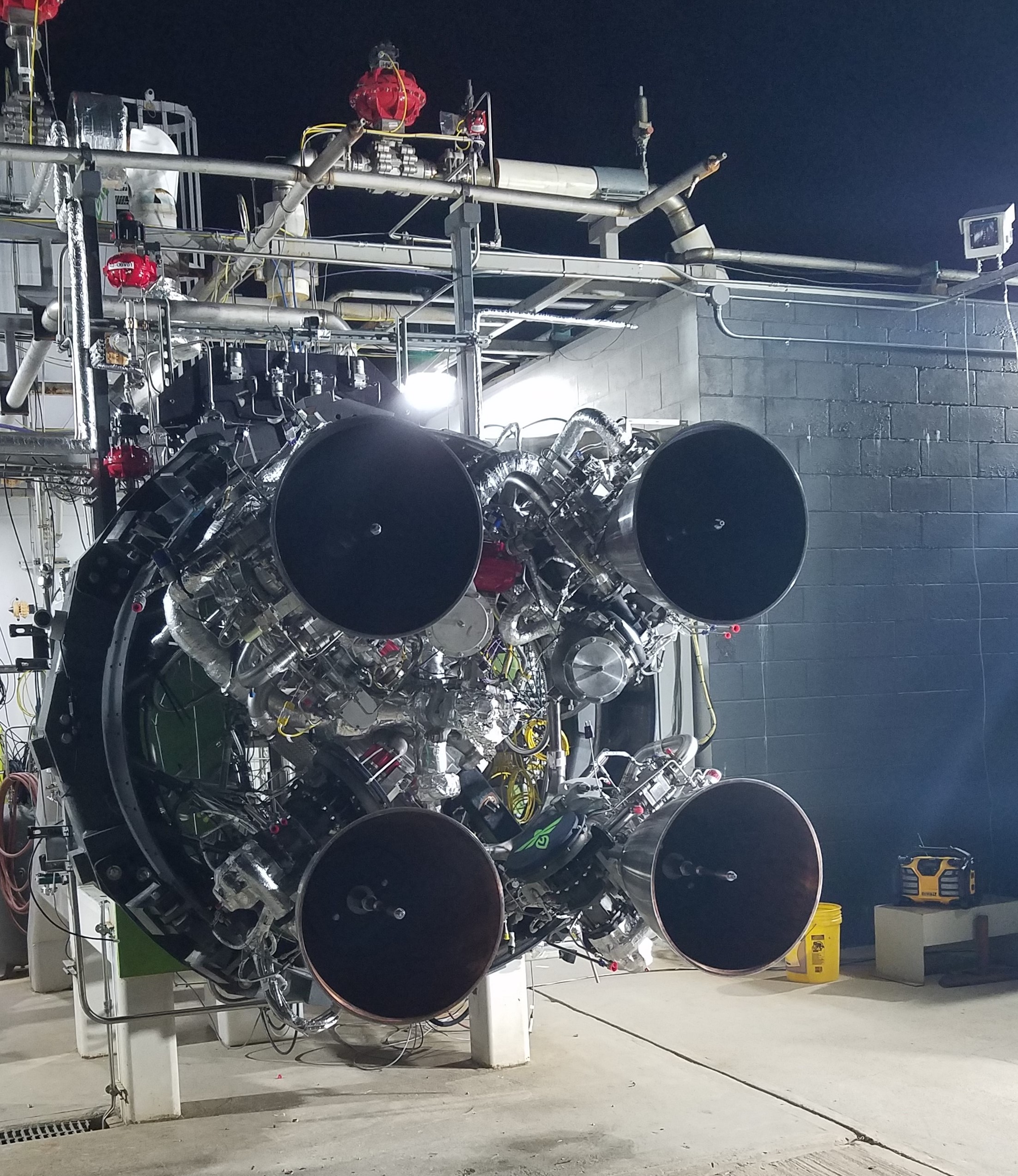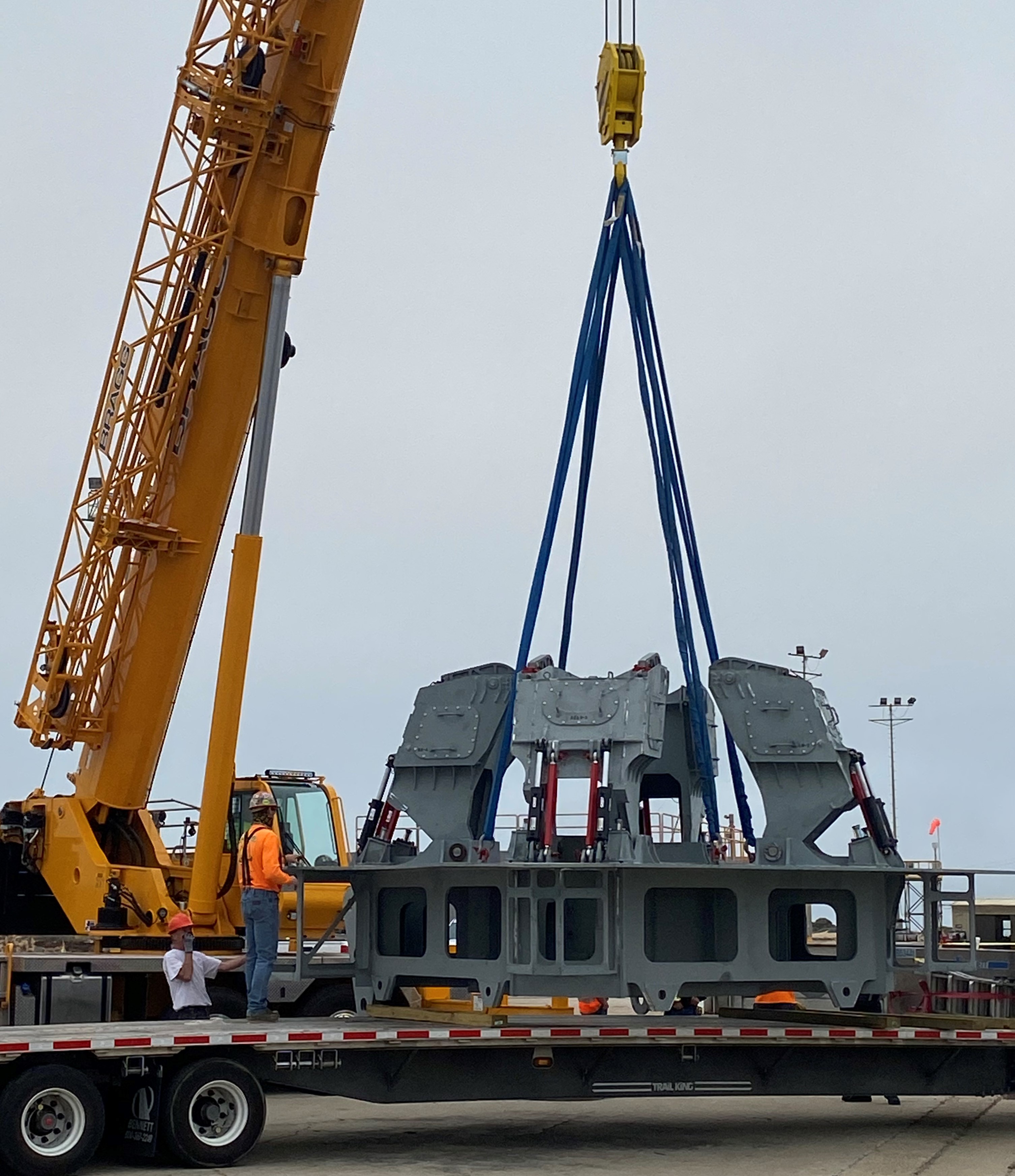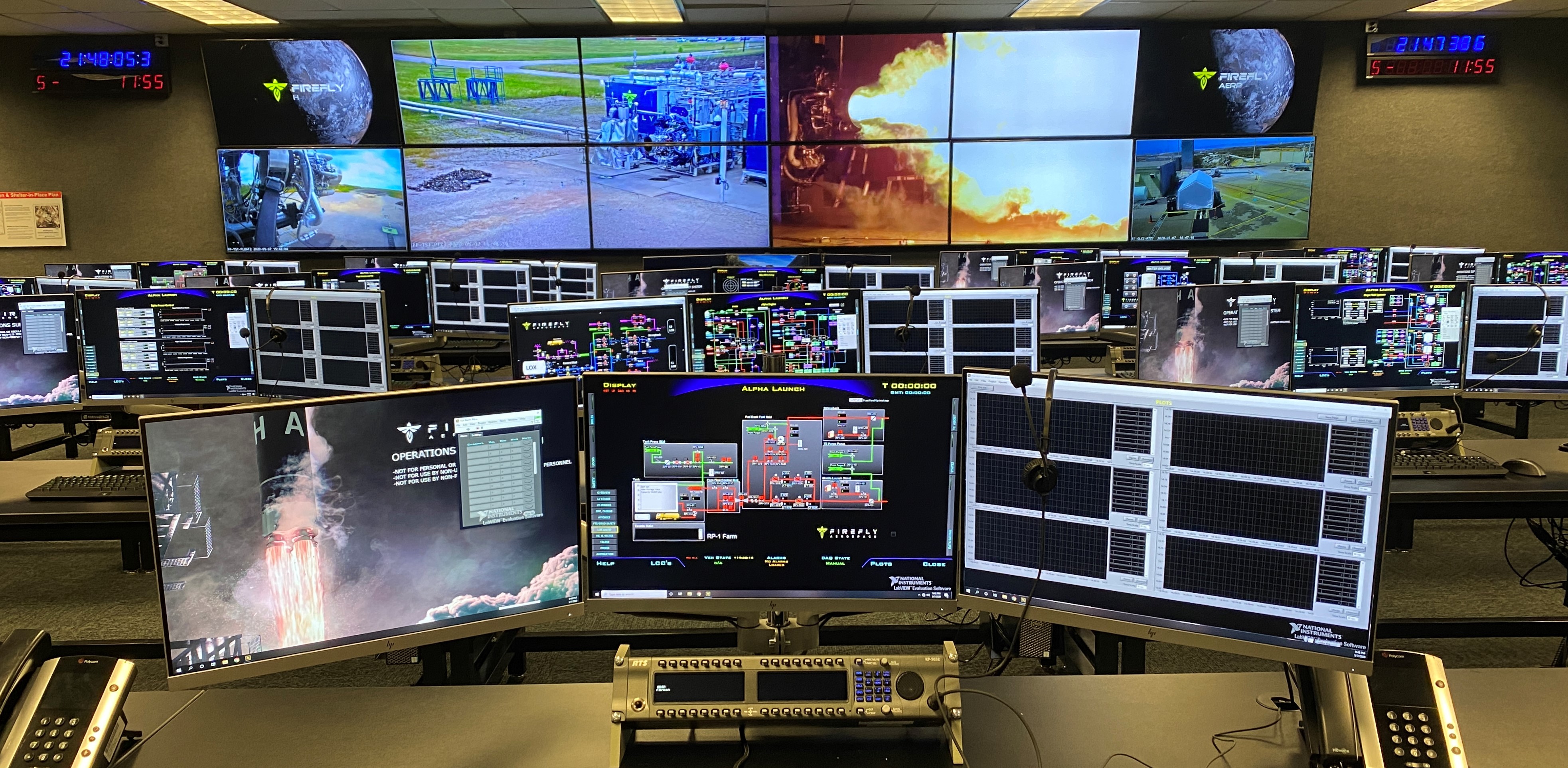Firefly aims to debut its Alpha rocket for small satellites this fall
Alpha should lift off for the first time in October or November.

Firefly Aerospace's advanced rocket for small satellites should be ready to launch for the first time this fall, company representatives said.
The two-stage rocket, known as Alpha, was originally scheduled to debut in early 2020. But the coronavirus pandemic intervened and delayed things at Firefly, as well as at other space companies around the world. Some suppliers had to delay shipments, and work slowed due to necessary physical distancing measures.
The impacts at Firefly extended beyond the Firefly project. The company is also working on a larger rocket, called Beta, and a robotic moon lander in support of NASA's Commercial Lunar Payload Services program. Still, Firefly continued to grow amid the pandemic, expanding from 250 employees in January to 310 employees today, largely via funding from company co-founder Max Polyakov.
Related: Firefly Aerospace uses rocket engine to light birthday candles in epic cake video
Now Alpha is almost ready to get off the ground. Firefly is targeting a launch sometime in late October or early November from California's Vandenberg Air Force Base, provided final testing and certification go as planned.
"Over the last few months, there have been even more challenges than we usually have in this industry," Robb Kulin, Firefly's chief operating officer, told Space.com. He was referring to the tight race Firefly is in, as many companies are rushing to serve the flood of cubesats and other small satellites looking to launch to space for Earth observation, telecommunications and other applications.
The pandemic added to the normal pressures Firefly was expecting in 2020, including certifying a new rocket in Briggs, Texas; certifying Firefly's first launch facility at Vandenberg; receiving the needed launch certificates allowing the rocket to fly; and the normal work with suppliers and contractors.
Get the Space.com Newsletter
Breaking space news, the latest updates on rocket launches, skywatching events and more!

Work continues, however, with masks, physical distancing and protocols to let ill employees stay home. Firefly representatives said the company has been fortunate that few of its employees have gotten sick to date with COVID-19, the disease caused by the novel coronavirus.
On July 20, masked employees proudly posed in front of the Firefly mobile launch stand as they prepared to ship it from Texas. On July 27, another tweet showed the stand had arrived safely in California.
But Firefly also remembers to pause, at times, and acknowledge how far it's come. In June, the company released a "Happy Birthday" thank-you video to Polyakov, using planned certification testing of its Lightning upper-stage engine to light candles on a birthday cake. The cake ended up somewhat charred (unsurprisingly), but the video garnered nearly 20,000 views on Facebook while letting the teams have some fun during a busy time in their lives, Kulin and other Firefly officials said. Polyakov loved the video, they said, adding that he admired the team's innovation even more than the cake.

The impending Alpha launch is a big milestone for a company whose predecessor entity, Firefly Space Systems, entered bankruptcy protection in 2016. Firefly Aerospace representatives said that step was taken because an early investor needed to pull out due to Brexit, the gradual withdrawal of the United Kingdom from the European Union. Out of the ashes rose Firefly Aerospace, which announced a $52 million expansion in 2019, including a second, future launch site at Cape Canaveral in Florida.
Alpha is designed to give small satellites a dedicated ride into space. Traditionally, such satellites have needed to piggyback alongside larger ones on "rideshare" missions aboard big rockets. But Alpha will be targeted at small satellites especially, with Firefly doing its best to deliver them into orbit for a cost of about $15 million per mission. (For comparison, SpaceX sells launches of its Falcon 9 booster, the industry leader in the "big rocket" category, for $62 million apiece.)
Firefly isn't alone is this ambition. California-based company Rocket Lab already delivers small satellites to orbit with its Electron rocket, for example. And other companies, such as California outfit Astra, are working to do so as well.
Related: Cubesats: Tiny, versatile spacecraft explained (infographic)

The Alpha rocket will be made using carbon fiber composites, which should minimize cracking in the rocket tanks that store liquid oxygen at supercool temperatures, Firefly representatives said. The company eventually aims to achieve a rapid launch cadence, with an Alpha lifting off roughly every two weeks. (Typical rideshare missions happen once every few months per launch provider, although the pace is picking up as larger companies respond to changes in the market.)
Alpha is designed to send 1.1 tons (1 metric ton) to low-Earth orbit, a popular destination for short-lived satellites that will be used in constellations for a few months or years.
Though the upcoming Alpha mission is a test flight, the rocket will be carrying satellites — numerous small payloads that are part of Firefly's Dedicated Research and Education Accelerator Mission. Several academic and educational payloads will ride to space at no cost, as Firefly aims to make space accessible to those that normally cannot afford to participate.
The first Alpha mission will need to fly a relatively safe "dogleg" inclination to orbit that will use a little more fuel than normal. Because this will be the rocket's first-ever launch, Vandenberg officials asked for this extra precaution for safety's sake, to help protect the people living near the base.
Alpha's customers for the second and third flights have not yet been determined. "We've got a number of competing customers, and we're locking in some details right now," Brad Schneider, Firefly's chief revenue officer, told Space.com. We do know about some payloads that will fly in the more-distant future, however. In February, for instance, Firefly inked a deal with Satlantis to launch a constellation of small satellites around 2022.
The second and third Alpha rockets are already under construction for their missions in 2021. The nominal mission sequence calls for each of the first three rockets to fly about three months after its immediate predecessor. Eventually, as Firefly ramps up its supply chain and its customers, the launch pace will quicken, company representatives said.
Firefly is also "starting to turn up the heat on the development of Beta vehicle," which is a launcher designed for medium-sized missions, Kulin said. The Cape Canaveral site will be activated fairly soon, allowing the company to aim, eventually, for interplanetary launches and moon missions, since the Cape's low-latitude location provides a boost for rockets headed toward such distant destinations.
Kulin said he is glad of the progress at Firefly amid a challenging 2020: "We've been holding steady, and now we hit that point where everything is really, truly coming together."
Follow Elizabeth Howell on Twitter @howellspace. Follow us on Twitter @Spacedotcom and on Facebook.
Join our Space Forums to keep talking space on the latest missions, night sky and more! And if you have a news tip, correction or comment, let us know at: community@space.com.

Elizabeth Howell (she/her), Ph.D., was a staff writer in the spaceflight channel between 2022 and 2024 specializing in Canadian space news. She was contributing writer for Space.com for 10 years from 2012 to 2024. Elizabeth's reporting includes multiple exclusives with the White House, leading world coverage about a lost-and-found space tomato on the International Space Station, witnessing five human spaceflight launches on two continents, flying parabolic, working inside a spacesuit, and participating in a simulated Mars mission. Her latest book, "Why Am I Taller?" (ECW Press, 2022) is co-written with astronaut Dave Williams.









